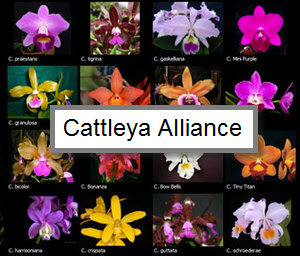Cattleyas Set the standard by Which Other Genera Can Be Grown
IN ORCHID LITERATURE AND discussions, it is common to read or hear references to “typical orchid conditions” or “basic orchid culture.” Often the understanding of those phrases is taken for granted. Since orchids have rather different requirements compared with many other sorts of plants of horticultural interest, it is worthwhile to review a bit of the physiology and basic cultural requirements of an orchid.
As orchids make up one of the largest of all plant families, it is fair to ask what is typical or basic among them all. A mental comparison among the genera Masdevallia, Cattleya, Phalaenopsis and Paphiopedilum would likely lead one to conclude that the answer could be “not a lot.” Nevertheless, there is a need for a point of departure when one discusses tropical orchids and their care.
For that purpose, the cattleya has become the standard bearer for the sizeable clan. In Western cultures, it is the first flower most envision when the word “orchid” is heard. Indeed, basic orchid culture is synonymous with what most growers refer to as cattleya conditions, allowing for the notion that not even all cattleyas require an identical environment.
Structurally, the cattleya is a sympodial orchid, i.e., a plant that typically produces one new growth each year from the base of its last growth. Each new growth produces a pseudobulb, foliage and its own set of roots. Mature plants in good condition will also put forth flowers. Particularly healthy or vigorous plants may produce more than one new lead each year. Cattleya flowers may appear rather delicate, but anyone who handles and closely examines a mature cattleya plant cannot help but be impressed by their sturdiness. Healthy plants have rather thick leaves and pseudobulbs that are quite strong and rigid. You may be reminded of some cacti and succulents you have known, and indeed, there are some functional similarities.
The thickened leaves and pseudo-bulbs store water and nutrients to nourish the plant through periods of drought. A thick waxy outer layer helps prevent leaves and pseudobulbs from desiccation. Cacti and succulents often grow where rainfall is infrequent and soils are often dry. Cattleya plants, as epiphytes (“air plants”), typically dwell on tree limbs and occasional rocks where moisture is also sporadically available. Cattleya roots are thick and covered with a white spongy coating known as velamen that quickly absorbs water when moistened. The velamen on the rambling roots of a cattleya plant also enables the plant to cling tightly to its perch. A number of Cattleya species grow where rain, fog or dew moistens the roots almost daily, but the roots tend to dry quickly because of their exposure to air. Other Cattleya species grow in habitats where there are definite periods of dry weather.
Another reason that the roots of wild cattleyas dry quickly is that the plants tend to thrive in locations that have good air movement. These are not dry breezes, however, as relative humidity levels in cattleya habitats stay comfortably moist. Cattleyas should not be grown in stagnant air that is either too dry or too moist; a relative humidity range between 40 to 60 percent is ideal. You should be able to sense air moving when you enter a cattleya house, but no hurricane-force winds please. Among the best adjectives for cattleya house air quality is that it should feel “buoyant.”
Light is essential for plants, as it drives the photosynthetic process that enables them to grow and reproduce. As orchids go, the cattleya is generally considered to be one that prefers rather high levels of light. A range of 2,000 to 4,000 foot-candles, or about 20 to 40 percent of full sun is a good goal. Cattleya plants grown in a greenhouse or sun porch will need to be protected from full sun. Shade can be provided with mesh, lattice, slats or blinds. White shading compounds can also be applied to the greenhouse covering or windows to reflect some of the sun’s rays. In nature, many cattleya orchids are situated where foliage above them shifts with the breeze to keep excessive light from burning the foliage. Other habitats favoring the cattleya orchid include those where only the early morning or late afternoon rays of the sun strike the plants.
As far as temperatures are concerned, the cattleya generally thrives when nights are in the 55 to 60 F (13 to 15.5 C) range, with daytime levels 10 to 15 F warmer. This temperature preference puts them into the group of orchids popularly known as “intermediate growers.” Note that these are moderate temperature regimes. Most growers imagine the tropical habitats of orchids as rather steamy and hot. This was also the misunderstanding of early orchid enthusiasts who, in their 18th and early 19th century naiveté, cooked more than a few of them. Certainly many cattleya orchids will tolerate temperatures higher and lower than these, but interrelated environmental factors such as light and humidity need to be in proper balance. Also, the importance of air movement must not be ignored.
If you can provide growing conditions such as these, you will have an ideal environment for cattleya orchids. In other words, these are the growing conditions that are often described as basic orchid culture and you will find that many types of popular orchids will thrive alongside catts. It is probably not hard to appreciate how modifying the light, temperature or humidity from those described here would create an environment that would be suitable for a different type of orchid from a slightly different tropical habitat.
